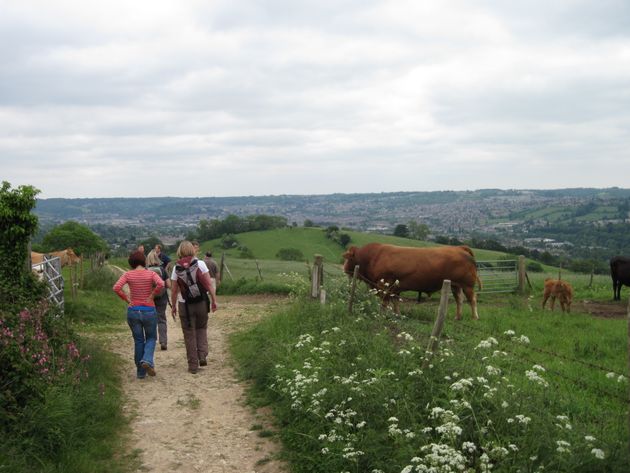
The Green Belt is the ‘countryside next door’ for 30 million people – more than half of England’s population. It’s where those of us stuck in cities go to get away from the stresses and strains of urban life. Its fresh air and open spaces make it fundamental to our physical health and mental wellbeing.
Green Belt policy aims to prevent the urban sprawl which is reducing quality of life in so many cities across the world. This unsustainable form of development swallows up farmland and wildlife habitats while increasing air pollution, flood risk and car dependency.
While there is no comparison with the developing world’s unprecedented growth in population and consumption, England is in the middle of its own housing crisis – a situation that many argue should justify the return of urban sprawl here. A lack of affordable housing is entrenching social inequalities and preventing younger people and families from getting onto the housing ladder. However, building on Green Belt land is not a viable solution to this crisis.
When protected countryside is released to developers, it’s not low cost housing they build, but executive homes for the most wealthy. 84% of homes built on Green Belt in recent years have been for the middle or top end of a market that is already unaffordable for most people unless they already have access to existing housing wealth. Misguided calls to build on Green Belt result in millions of people losing valuable access to countryside without doing anything to tackle the housing shortage.
Throughout the 19th and 20th centuries there was a widespread consensus that people need access to countryside just as much as they do housing and health services. Social reformers since Octavia Hill, as well as leaders from across the political spectrum, all recognised the importance of protecting the countryside as a primary social good.
Post-war legislation saw the Town & Country Planning Act, National Parks and Green Belt protection stand proudly alongside the establishment of the NHS and a great programme of social housebuilding, because everyone agreed that access to clean air and nature was of equal importance as the health of our nation and the provision of shelter.
In the 21st century, however, the countryside has somehow become a target for those seeking a solution to the housing crisis. An adversarial situation has arisen where demands for growth become set against local community concerns for the environment, a situation in which nobody wins. We’re told that young people must accept a trade-off between housing and countryside: a strangely binary argument which would never be applied to other social goods like health.
We live on an island – a densely populated island – where land is a scarce and finite resource. Interestingly however, compared to many countries, our largest cities are less densely populated. Compared to the densest neighbourhoods of Paris and Barcelona for example, London most tightly compacted areas are home to 150% less people per square kilometre.
There is still much more we can do to make towns and cities across the Midlands and the North attractive places to live. Investing in these areas would represent much better value for public money than simply servicing more building on Green Belt land in pressured areas of southern England.
This country’s treatment of our land, its ownership and value, the way the construction economy works and the dysfunctional nature of the free market when applied to housing, are the real factors behind the chronic housing problems we face. But there are solutions that don’t involve taking away our access and opportunity to connect with the natural world.
There’s currently space available on previously developed land for well over one million homes. Most of this land is in urban areas, close to jobs, roads, entertainment and amenities – areas where many younger people looking to get onto the housing ladder most want to live. Significant amounts of it can also be found in southern England, not just the northern regions.
There is brownfield land within our Green Belts too, but developers continue to exploit the housing target pressures and planning loopholes that enable them to maximise profits by building executive housing on greenfield land at wastefully low densities.
As the Government reviews its ‘planning rulebook’, the NPPF, it’s important and timely to stress the need for brownfield sites to be prioritised. We need a genuine ‘brownfield first’ policy that allows local authorities to refuse greenfield development where there is a suitable brownfield site nearby. Releasing parts of the Green Belt for housing should always be a last resort.
In the rare instances where this needs to happen, the homes built must be affordable for local people on average incomes or below, and on land already well-served by public transport. We must first look to re-use previously developed land and avoid the temptation to pick on rundown bits of Green Belt, just because the people who use it are those less likely to make a fuss.
It is these areas that are most important of all, as the front line against sprawl, and the most accessible countryside for the communities who would benefit most from the enormous health and wellbeing benefits it offers. We must do all we can to protect and enhance it in a way that benefits as many people as possible. People need both good affordable housing and access to nature. If we use land well we can do both.
Our predecessors managed to deliver over half a century of unprecedented housing and economic growth while protecting and ensuring that people had access to green space near to where they live. Will our generation be able to say the same, or will we sell the young a falsehood: that they can’t have housing without losing their countryside?